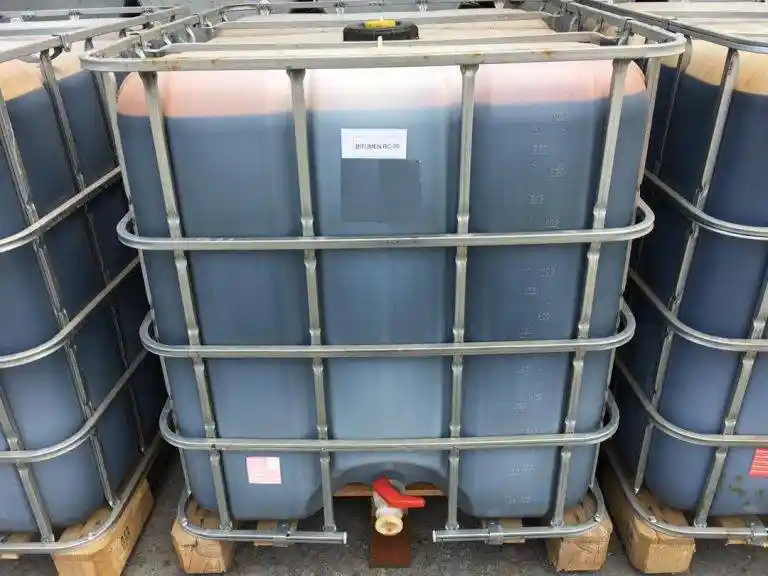
General description of cutback asphalt RC 70
Bitumen RC70 is dissolved of bitumen 60/70 in ultra-light solvents. In many countries, kerosene and other volatile petroleum-derived products are added as a cutter or cutback agent to bitumen to reduce (or cutback) the viscosity of the bitumen. The mixture obtained may be called cutback bitumen.
The reduction in viscosity of the bitumen aids the construction of seal coats in road pavements as the softened mixture wets the chips more easily. The cutback agent evaporates from the seal coat, the cutback agent becoming a negligible component of the seal coat a few months after application. If significant amounts of the cutback agent remain in the seal coat an unwanted long-term softening effect may result.
Uses of cut back asphalt RC 70
In the field of road construction, cutback agents play a vital role in optimizing the performance of asphalt. Explore our range of cutback bitumen products today to enhance your construction projects. This transformative process significantly contributes to improving the overall surface quality, ensuring optimal performance and longevity of road infrastructure. The process is essential for enhancing surface quality, and ensuring optimal road performance in the pavement aggregate base course or substrate. The concentration of kerosene as a bitumen cutback agent varies based on local conditions and requirements.
The cutback bitumen stands out as an ideal choice for prime coat and cold applications. Its ease of use is underscored by the absence of the necessity for thinning and heating.
The Bitumen RC-70 consists of the initial incorporation of asphalt into the surface of non-asphalt based course preparatory to any superimposed treatment of construction.
The bitumen RC-70 applies to waterproofing of surfaces, plugging capillary voids, coating, and bonding loose mineral particles.
Packing of cutback ASphalt RC70
Packing of the Asphalt RC-70 is in new thick steel drum on the pallet to prevent any leak inside of container and bulk in bitutainer and tanker.
Analysis of bitumen RC 70
| Properties | Min | Max | Test Method | |
| Kinemalic 1 viscosity at 60°C, eSt | 70 | 140 | ASTM D2170 | |
| Flash Point (Tag Open-Cup),°C | – | – | ASTM D1310 | |
| Distillate test 2 : | ||||
| Distillate, percent by Volume of total 360°C | ||||
| To 190°C | 10 | – | ASTM D402 | |
| To 225°C | 50 | – | ASTM D402 | |
| To 260°C | 70 | – | ASTM D402 | |
| To 316°C | 85 | – | ASTM D402 | |
| Residue from distillation to 360°C: | ||||
| Test on residue from distillation Penetration at 25°C,100g, 5 sec. | 55 | – | ||
| Ductility 3 at 25°C, cm | 80 | 120 | ASTM D402 / ASTM D113 | |
| Solubility in trichloroethylene, percent mass | 100 | – | ASTM D402 / ASTM D2024 | |
| Water, percent volume | – | 0.2 | ASTM D95 | |
A: RC-70 is a rapid-curing cutback asphalt binder, designed for use as a prime coat, tack coat or for stockpile mixes where quick solvent evaporation and fast set-up are needed. It provides strong adhesion and is ideal for road repair and maintenance where turnaround time is short.
A: RC-70 cures much faster than medium- or slow-curing cutbacks. It contains a higher proportion of volatile solvent to reduce viscosity, which allows it to penetrate quickly into surfaces and set rapidly, making it effective in warmer conditions or for high-traffic repairs.
A: Key properties typically include a kinematic viscosity of about 70–140 mm²/s at 60 °C, a residue after distillation of at least 55 % by volume, and a penetration of the residue in the range of 80–120 (0.1 mm) at 25 °C. These specs ensure it offers good bond strength and rapid curing performance.